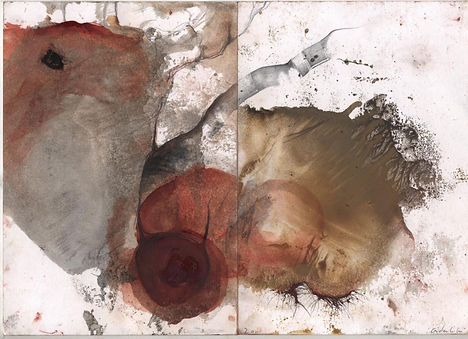The an-organic
Project:
New digital printing technologies have recently had sufficient qualities to disseminate pictorial work. Just look at the progress a company like Epson has made with their process called Digigraphie. These technological advances will bring to the processes of creation and dissemination of the visual arts the same upheavals that music, video and cinema have undergone for several decades. It is a question of understanding and anticipating these new data so as not to suffer them but on the contrary to foresee how it will change the art market and the artistic practice itself.
Steps :
Following my work on the image of man facing death, recumbent figures and Provisional Monuments, my research on the body continues with an-organics.
They are improbable gendered corporealities against a background of abstract gestural painting.
This work is done in small formats, mainly notebooks. They have this quality of keeping all paths, even those that lead nowhere. And they force to distribute only the scans, being practically impossible to exhibit.
Process :
First station: abstract gestural painting.
The equation between the support, the tools, the thinners and the colors is fundamental, on it depends the speed of execution and the drying times. The palettes are organized with colors evoking the carnal, the organic, the sex: flesh pinks to blood red, greasy and pissy yellows, bone whites, rotting greens, dirty chestnuts, digestive blues and the black.
The desire is affirmed to find new painting techniques with dilutions, juices, transparencies and various practices.
This stratum is totally subject to multiple constraints such as temperature, hydrometry, porosity of the support, the mental and emotional state of the day, the quantity and quality of the diluent and the colors, the geography of the workplace and the pallets, the size and quality of the tools, the speed and violence of the gesture, sensuality, improvisation and mastery of techniques among others.
She is a founder.
Second station: the development of corporealities.
From the accidents of the previous layer an organic and playful desire emerges. This moment is intimately conditioned to a direct relationship to the unconscious and to my own body. Some days, nothing is revealed, the paint remains stubbornly opaque, others, things are clearly embodied.
These figurations extrapolate the sensual continuity of painting with the world, the material, organic or inert.
Third station: deconstruction, endangerment.
This is the most difficult phase of the work to describe. It is in the direct confrontation with the artist and the endangerment that the work opens up to the other, to the public. It is the moment when everything can be deconstructed, destroyed, modified when the shift occurs.
Other elements may appear as text.
Fourth station: digitization and digital broadcasting.
The notebooks are digitized for distribution. Only the products of this digitization are offered for sale: digital editions, video projections, DVDs.
For marketing, we will study all the possibilities.
Digital makes it possible to break out of the diktat of a one-size-fits-all work of art in a unique place and can truly democratize the art market.
Small pictorial reminder:
Painting is a chemical adventure, we don't work with colors but with colored materials. Certain experiments materialize on a precise scale. One can imagine using other supports, other tools, other thinners but the chemistry of the paint will be maintained at a precise size. There is therefore a whole process to be invented because digital technology allows precisely this change of scale. Showing the painting as it has never been shown before, making the indescribable visible, expressing the almost nothing, the detail, the sag, the shipwreck, the side.
Digitization also offers the possibility of going back in time, of showing the genesis of a work. Successive scans carried out at all stages of a work can reveal the different elements of an artistic process, the choices, the doubts, the risk-taking, the blinds, the infinite possibilities and their precision.
This new pictorial language supports specific themes.
How to paint a hole, an orifice and what is the difference.
How to paint a slit, a scar, a contraction, a smell of sex, an injury, a bodily discharge, a frustration, an enjoyment, surely by rethinking the painting as a physical and sensual continuity of the body.
Huile et dessin sur carnets Moleskine
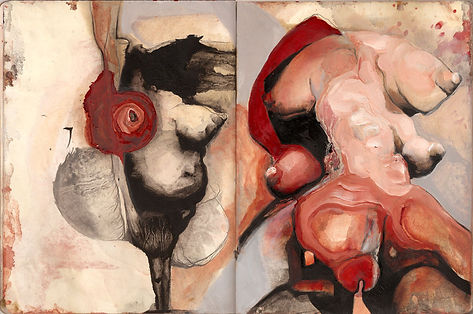
An-organique n°1
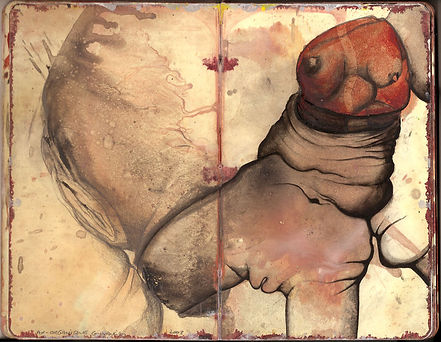
An-organique n°2
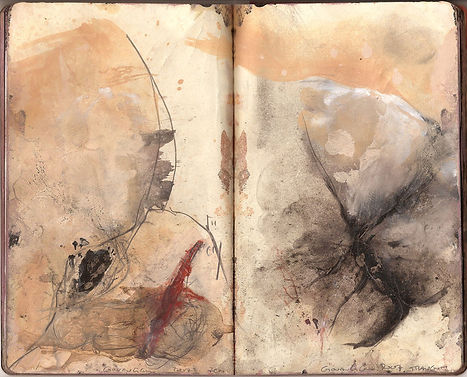
An-organique n°3
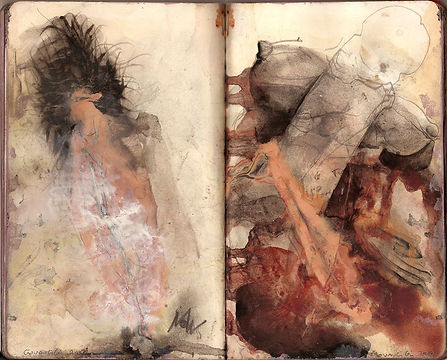
An-organique n°4

An-organique n°5
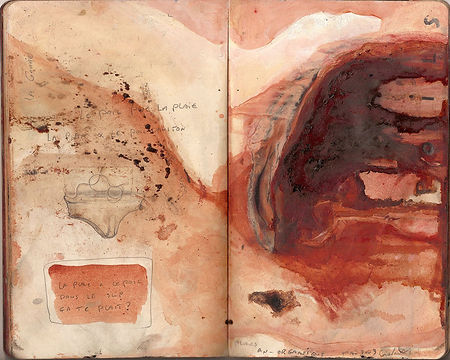
An-organique n°6
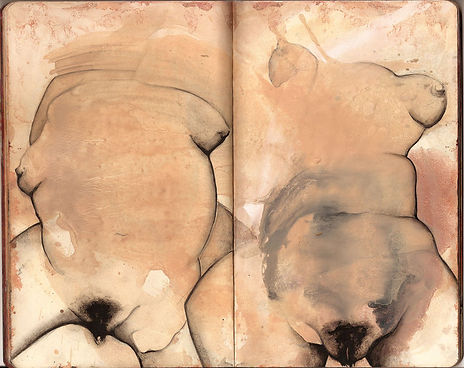
An-organique n°7
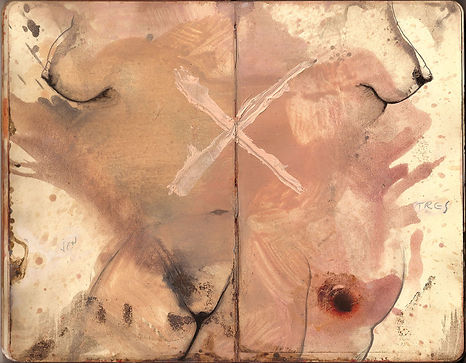
An-organique n°8
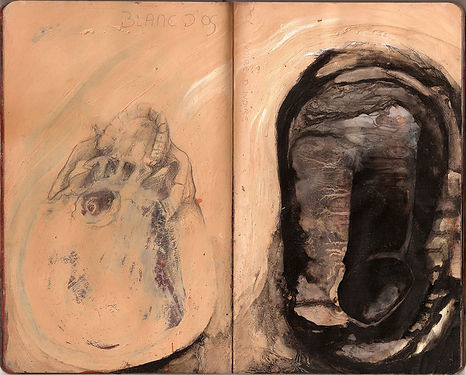
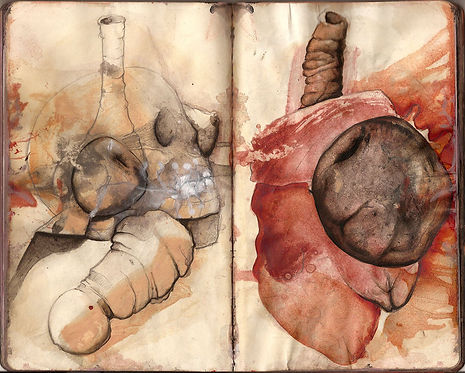
An-organique n°10
An-organique n°9
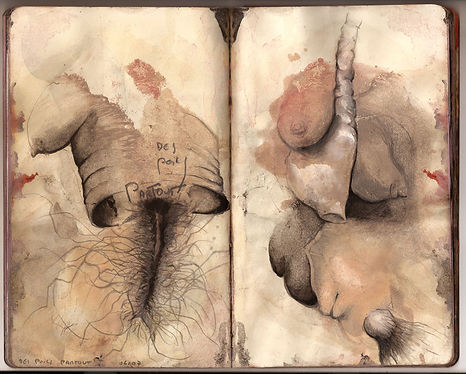
An-organique n°11

An-organique n°12
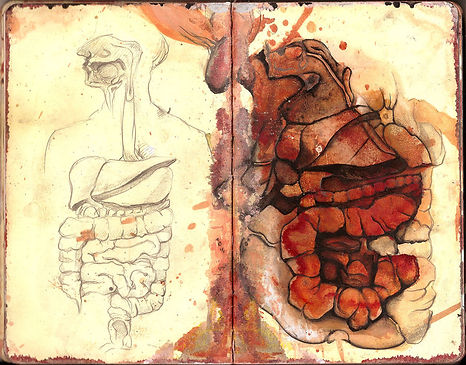
An-organique n°13
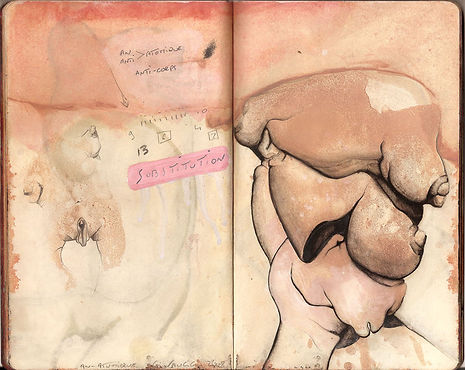
An-organique n°14
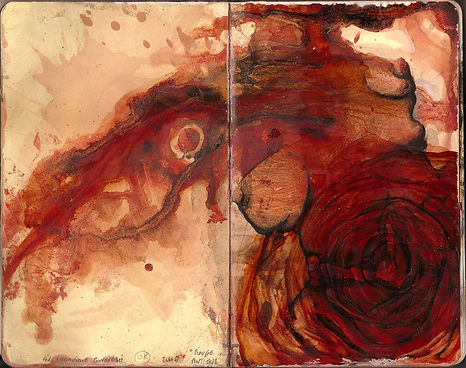
An-organique n°15
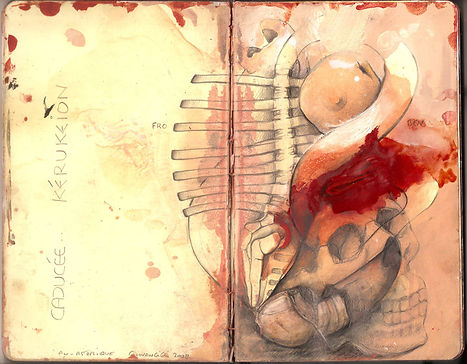
An-organique n°16

An-organique n°17
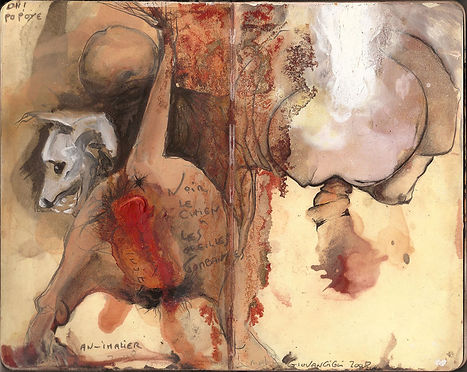
An-organique n°18
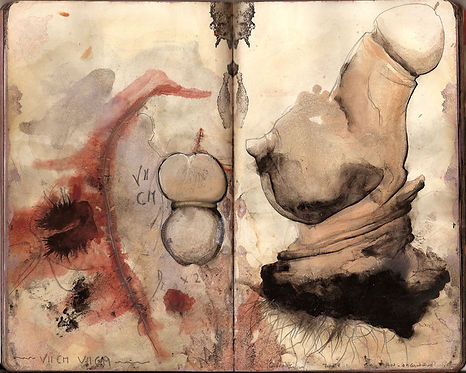
An-organique n°19

An-organique n°20
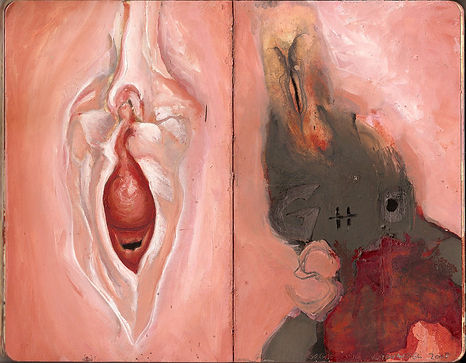
An-organique n°21
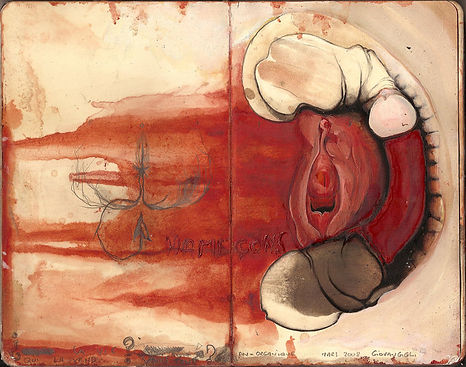
An-organique n°22

An-organique n°23

An-organique n°24

An-organique n°25

An-organique n°26

An-organique n°27

An-organique n°28

An-organique n°29

An-organique n°30
An-organique n°27

An-organique n°31

An-organique n°32

An-organique n°33

An-organique n°34

An-organique n°35

An-organique n°36

An-organique n°37

An-organique n°38
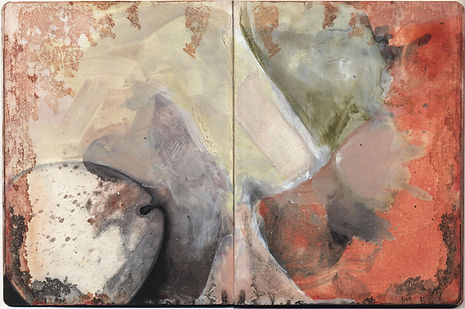
An-organique n°39

An-organique n°40

An-organique n°41

An-organique n°42

An-organique n°43

An-organique n°44

An-organique n°45

An-organique n°46

An-organique n°47

An-organique n°48
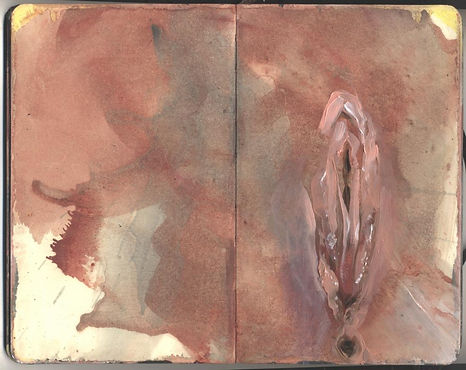
An-organique n°49
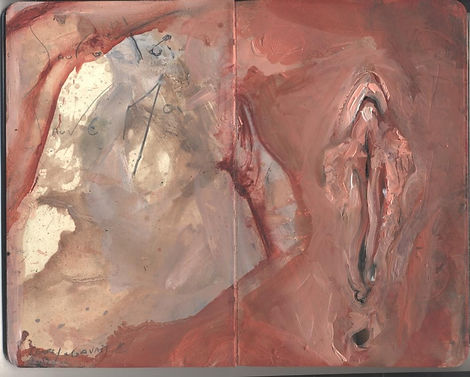
An-organique n°50

An-organique n°51
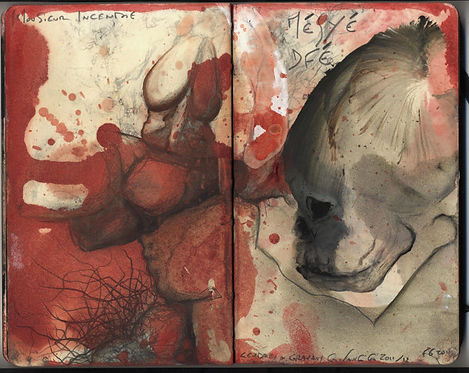
An-organique n°52
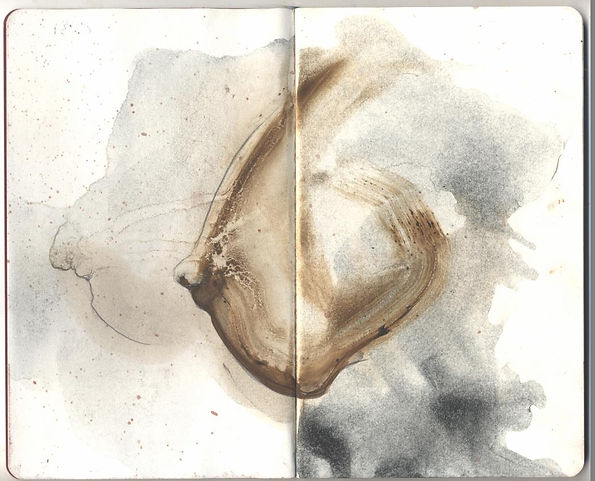
An-organique n°53

Dermacolor n°1

Dermacolor n°2

Dermacolor n°3

Dermacolor n°4

Dermacolor n°5

Dermacolor n°6

Dermacolor n°7
Dermacolor n°8

Dermacolor n°9
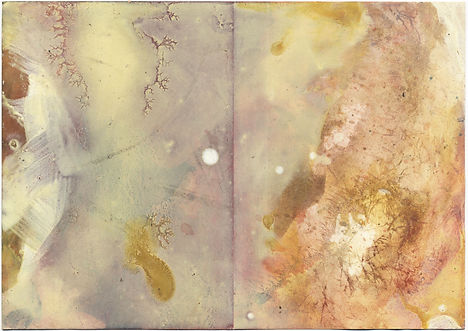
Dermacolor n°10

Dermacolor n°11

Dermacolor n°12

Dermacolor n°13

Dermacolor n°14

Dermacolor n°15

Dermacolor n°16

Dermacolor n°17
